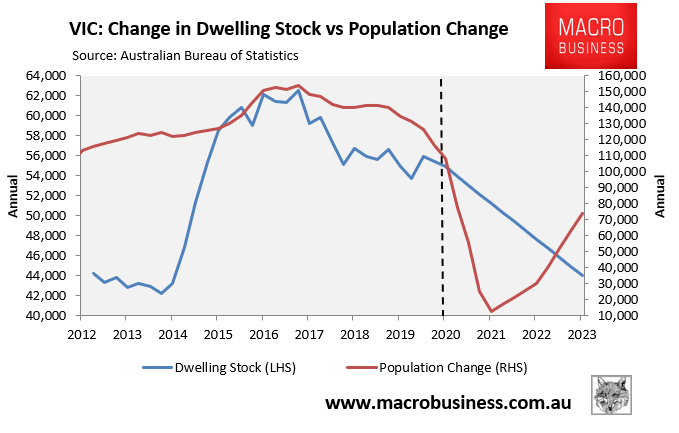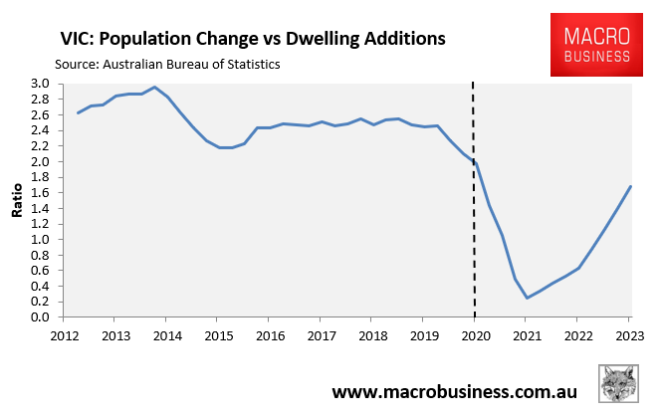The Australian Bureau of Statistics (ABS) yesterday released data showing that capital city residential property rents fell another 0.2% over the September quarter, which follows the 1.3% decline recorded in the June quarter:
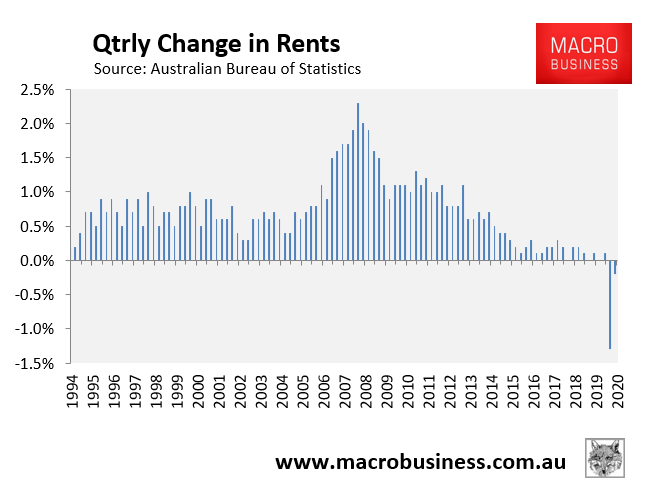
Over the year, Australian capital city rents fell by a record 1.4%:
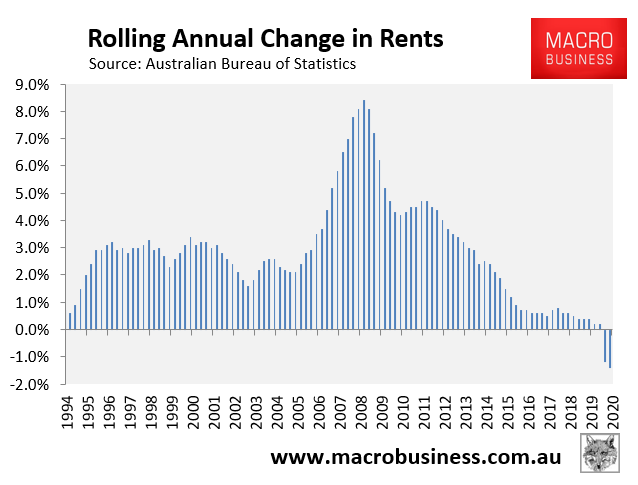
The below charts plot residential rental growth across the various capital cities:
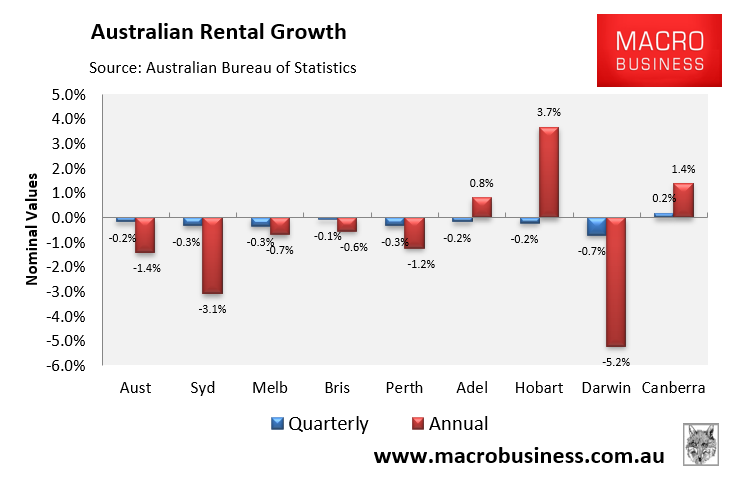
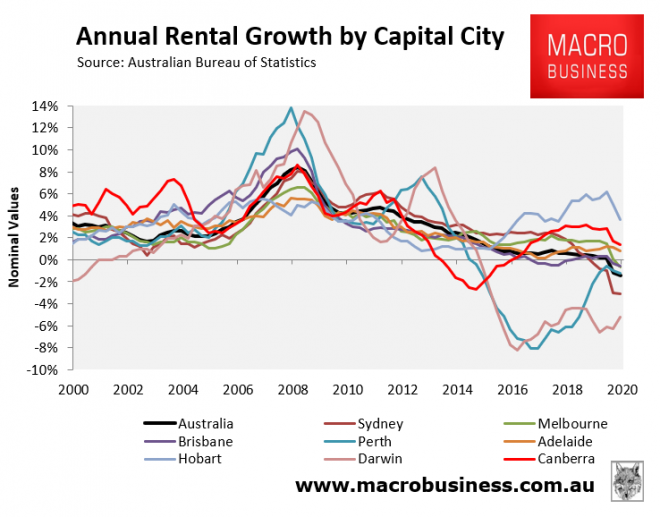
Quarterly rental growth was negative everywhere except Canberra over the September quarter, whereas all capitals except Adelaide, Hobart and Canberra recorded falling rents over the year.
In particular, Perth and Darwin have recorded falling rents for around six consecutive years, down 23.2% and 27.6% respectively from their peaks.
In real inflation adjusted terms, rents across the combined capital cities fell by 1.7% over the September quarter and by 2.1% year-on-year:
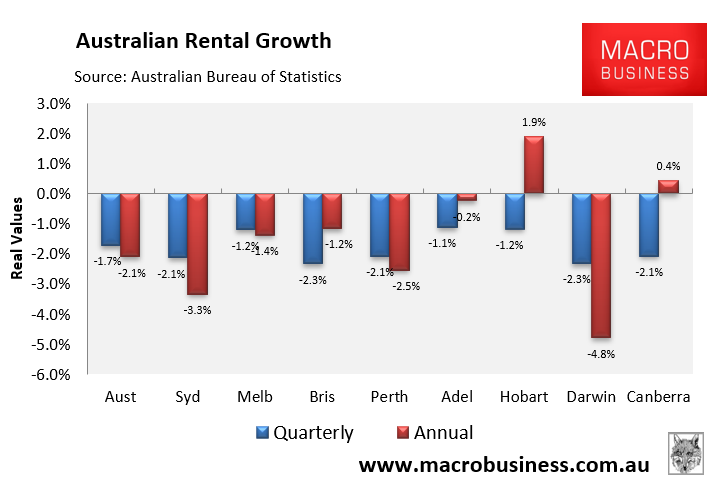
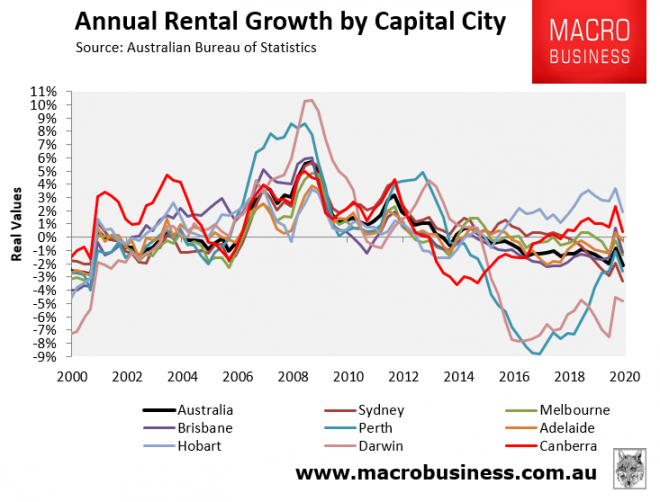
As shown above, all capitals recorded falling real rents over the September quarter, whereas over the year all capitals but Hobart and Canberra recorded rental falls.
The outlook for rents nationally remains poor given the forecast sharp fall in population growth due to collapsing immigration.
As noted in my recent report, even if dwelling construction falls gradually to cyclical lows (125,900 a year in 2023), Australia will face a whopping supply glut of 155,000 net dwelling additions versus 56,000 population increase in 2021 and 141,000 net dwelling additions versus 98,000 population increase in 2022:

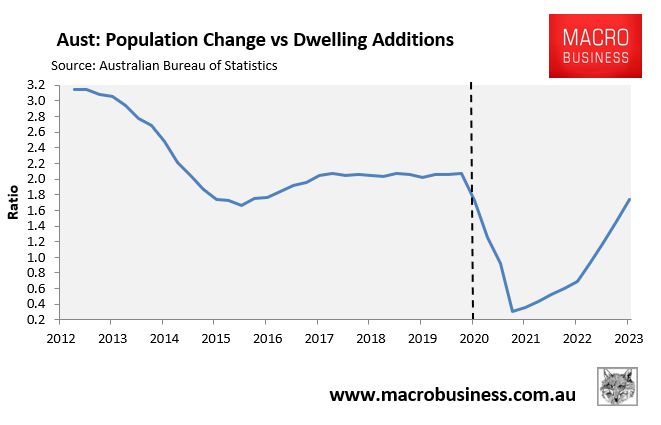
The situation is worst in NSW and Victoria, which are the key landing points for migrants.
NSW is facing huge supply glut with 42,000 net dwelling additions versus a 2,000 population decline in 2021 and 34,000 net dwelling additions versus 7,000 population increase in 2022:
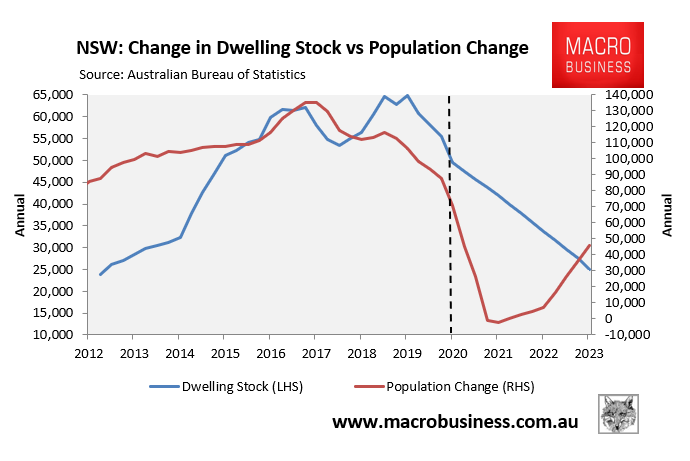

Victoria also faces an enormous supply glut with 51,000 net dwelling additions versus 13,000 population growth in 2021 and 48,000 net dwelling additions versus 30,000 population increase in 2022:
This data points to further rental falls across NSW and Victoria, at least for the next two years.

